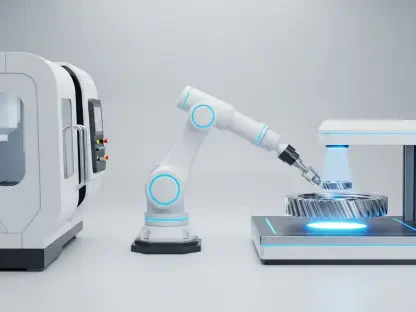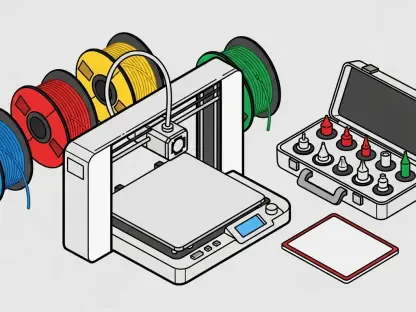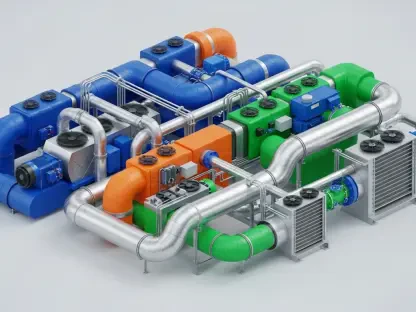Imagine a tire industry where manufacturing processes are so precise that productivity surges by 20%, where supply chains adapt in real time to market shifts, and where sustainability isn’t just a goal but a measurable outcome with energy costs slashed by a significant margin. This isn’t a distant vision but the current reality at CEAT, a leading tire manufacturer that has harnessed artificial intelligence (AI) to redefine what’s possible in this traditional sector. Recognized as a Lighthouse Factory by the World Economic Forum, CEAT stands at the forefront of Industry 4.0, integrating AI across its operations to address modern challenges. This guide explores how the company is transforming manufacturing, supply chain management, sustainability efforts, customer engagement, and research and development (R&D) through innovative technology.
The significance of AI in reshaping industries cannot be overstated, especially in a field as competitive and resource-intensive as tire production. For CEAT, adopting AI isn’t about following trends but solving real-world problems like operational inefficiencies and environmental impact. This best practices guide delves into the specific ways the company leverages AI to achieve tangible results, offering insights that other businesses can adapt. From boosting factory output to enhancing customer interactions, the strategies outlined here provide a roadmap for integrating technology with purpose.
The Importance of AI in Transforming the Tire Industry
In the era of Industry 4.0, the tire industry faces mounting pressures to innovate amid global competition and evolving consumer expectations. AI has emerged as a critical tool to address these challenges, enabling companies to optimize processes, reduce waste, and meet stringent sustainability standards. At CEAT, the adoption of AI represents a strategic move to stay ahead, ensuring that every aspect of the business, from production floors to customer touchpoints, benefits from data-driven precision.
Far from being a buzzword, AI delivers concrete outcomes that redefine operational benchmarks. For instance, predictive analytics and automation have become indispensable in tackling inefficiencies that once plagued traditional manufacturing. CEAT’s commitment to embedding these technologies positions it as a pioneer, demonstrating how AI can transform a legacy industry into a model of modern efficiency.
This focus on innovation also responds to the growing demand for customization and speed in product delivery. By prioritizing AI, CEAT not only addresses current market needs but also anticipates future shifts, setting a standard for others to follow. The company’s approach underscores that technology, when applied thoughtfully, can create a competitive edge in even the most established sectors.
Key Benefits of CEAT’s AI-Driven Approach
Implementing AI has brought CEAT a host of advantages that span multiple facets of its operations. One of the most notable gains is a 20% boost in manufacturing productivity, achieved through automation and real-time data analysis. This increase translates into faster production cycles and higher output without compromising quality, showcasing how technology can directly impact the bottom line.
Beyond efficiency, AI has enabled significant cost reductions and improved demand forecasting accuracy by up to 80%, ensuring that resources are allocated effectively across the supply chain. Additionally, customer satisfaction has seen a marked improvement through tailored solutions and responsive support systems. These advancements highlight the multifaceted value AI brings to a business traditionally reliant on manual processes.
Equally important is CEAT’s strengthened commitment to sustainability, with AI-driven energy solutions cutting conversion costs by 20%. Such initiatives not only lower operational expenses but also align with global environmental goals, positioning the company as a leader in responsible innovation. Together, these benefits illustrate how a strategic focus on AI can create a ripple effect of positive change across an entire organization.
Core Areas of AI Innovation at CEAT
Manufacturing Efficiency Through AI Automation
AI has fundamentally reshaped CEAT’s manufacturing processes by introducing automation that enhances both speed and precision. Closed-loop mixer control systems, powered by AI, monitor and adjust production parameters in real time, ensuring consistent quality. This technology minimizes human error and optimizes resource use, setting a new standard for operational excellence in tire production.
Complementing this, computer vision systems are deployed for tire inspection, identifying defects with a level of accuracy unattainable by manual methods. These innovations reduce downtime and ensure that only top-quality products reach the market. The integration of such tools reflects a forward-thinking approach to maintaining high standards in a demanding industry.
A striking outcome of these efforts is an 18% reduction in cycle time variation, alongside the aforementioned productivity surge. These metrics demonstrate that AI isn’t merely an add-on but a core component of redefining factory efficiency, offering a blueprint for other manufacturers aiming to modernize their operations.
Supply Chain Optimization with AI Tools
In supply chain management, CEAT employs AI to bring unprecedented agility and foresight to logistics. Demand forecasting tools, achieving up to 80% accuracy, allow for precise inventory planning, preventing overstocking or shortages. This predictive capability ensures that the company can respond swiftly to market fluctuations, maintaining a seamless flow of goods.
Container optimization is another area where AI makes a significant impact, maximizing space utilization and reducing transportation costs. By analyzing vast datasets, these tools determine the most efficient loading configurations, cutting down on waste. Such measures highlight how technology can streamline even the most complex logistical challenges.
A powerful example lies in the use of a data twin “cockpit,” which provides real-time insights for decision-making. This system enables managers to adapt to disruptions instantly, ensuring continuity in operations. The result is a supply chain that is not only efficient but also resilient, capable of navigating the uncertainties of global trade.
Sustainability Through AI-Driven Energy Solutions
Sustainability stands as a cornerstone of CEAT’s AI strategy, with predictive models playing a pivotal role in energy conservation. These models detect leakages in curing areas, a critical phase in tire production, preventing unnecessary energy loss. By addressing such inefficiencies, the company achieves a 20% reduction in energy conversion costs, a substantial step toward greener operations.
This focus on resource optimization extends beyond immediate financial gains, aligning with broader environmental objectives. AI’s ability to analyze patterns and predict issues before they escalate ensures that sustainability efforts are proactive rather than reactive. This approach offers a model for balancing industrial growth with ecological responsibility.
The practical impact of these solutions is evident in how they contribute to reducing the company’s carbon footprint. By integrating AI into energy management, CEAT demonstrates that technological advancement and environmental stewardship can go hand in hand, providing a compelling case for others in the sector to adopt similar practices.
Enhancing Customer Experience with AI
AI at CEAT extends its influence to customer interactions, transforming how the company engages with both business-to-business and business-to-consumer segments. AI-powered chatbots and WhatsApp assistants streamline warranty registration and after-sales support, offering quick resolutions to queries. These tools ensure that customers experience minimal friction when seeking assistance.
Additionally, an intelligent recommendation engine provides sales teams with region-specific stock insights, enabling tailored offerings that meet local demands. This personalization strengthens client relationships and boosts sales efficiency. The use of such technology underscores the potential of AI to create meaningful connections in a transactional landscape.
A notable impact is seen in the enhanced responsiveness these systems bring to customer support. By automating routine tasks and providing instant solutions, CEAT ensures that client satisfaction remains high, setting a benchmark for service excellence in the industry. This customer-centric application of AI reveals its versatility as a tool for engagement.
R&D and Innovation with Cutting-Edge AI
Research and development at CEAT benefit immensely from AI, particularly in accelerating product innovation. AI-driven tread design models reduce time-to-market for new tires by 10-15%, allowing the company to stay ahead of competitors. This speed is crucial in a market where consumer preferences evolve rapidly, demanding constant adaptation.
Partnerships with leading academic institutions like the Indian Institutes of Technology further push the boundaries of innovation. Collaborative projects exploring quantum computing for compound discovery aim to create more sustainable and durable materials. These initiatives reflect a commitment to blending academic rigor with practical application.
The impact of these efforts is clear in how quickly new products can be developed and launched. By leveraging AI, CEAT not only shortens development cycles but also ensures that innovations are aligned with market needs, offering a glimpse into the future of tire technology driven by data and creativity.
Cultural and Governance Foundations Supporting AI Adoption
Successful AI integration at CEAT hinges on a robust cultural foundation rooted in Total Quality Management principles. This framework fosters a mindset of continuous improvement, ensuring that technological advancements are embraced across all levels of the organization. Cross-functional teams and innovation sprints encourage collaboration, breaking down silos to drive collective progress.
Governance mechanisms play an equally vital role, with a centralized digital center of excellence guiding AI initiatives while allowing for federated execution. Safety guardrails for generative AI mitigate risks, ensuring responsible deployment. This balance between innovation and accountability builds trust among stakeholders, facilitating scalable adoption.
A distinctive “develop before you tell” approach further strengthens this foundation, focusing on proof-of-concepts before full implementation. Such pragmatism ensures that solutions are tested and refined, minimizing disruptions. This strategic blend of culture and governance offers valuable lessons for organizations aiming to navigate the complexities of digital transformation.
CEAT’s AI Journey and Industry Implications
Reflecting on CEAT’s journey, it becomes evident that the company has set a remarkable precedent in the tire industry by embedding AI across manufacturing, supply chain, sustainability, customer experience, and R&D. This transformation, underpinned by its status as a Lighthouse Factory, has shown that technology can drive measurable impact when aligned with clear business goals. The path CEAT charted offers a powerful example of pragmatic innovation that others can emulate.
Looking ahead, industry leaders and executives should consider starting their AI adoption by identifying specific value chain challenges rather than chasing technology for its own sake. Establishing strong governance frameworks to manage risks, especially with emerging tools like generative AI, remains essential. Aligning initiatives with quantifiable outcomes ensures that investments yield sustainable returns.
Furthermore, fostering a culture of collaboration and readiness for change can amplify the success of such endeavors. Businesses embarking on this path should prioritize pilot projects to test concepts, building confidence before scaling up. CEAT’s experience suggests that a deliberate, value-driven approach to AI can redefine operational paradigms, paving the way for long-term growth and resilience in a dynamic market.









